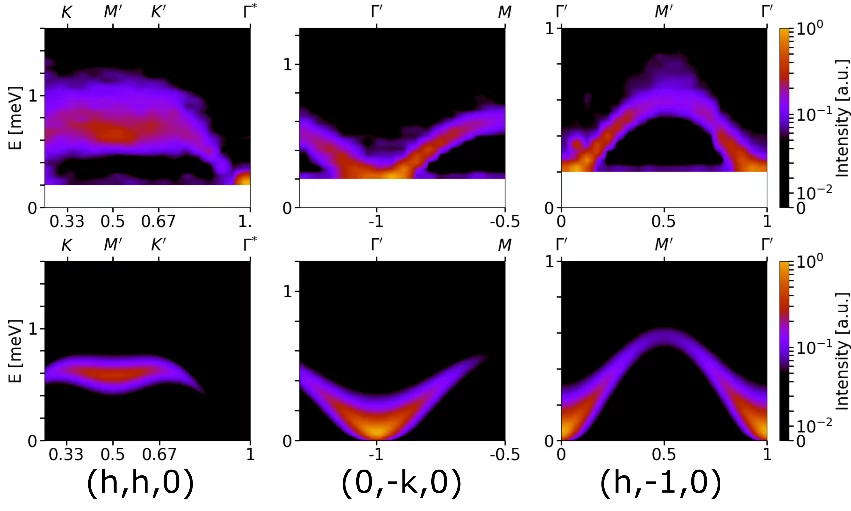The development of the exactly solvable Kitaev model reignited the search for quantum spin liquid (QSL) materials, in particular in honeycomb materials. Numerous candidate materials were proposed and novel theories constructed. Frustrated systems are regarded as prospective QSLs since the frustration prevents the ordering of the system and enhances quantum fluctuations. Despite the intensive efforts, this disordered quantum state remains elusive.
In this work, we study a two-dimensional antiferromagnet on the honeycomb lattice that is a potential QSL-candidate system. Magnetic ordering and correlation length provide important information about the order, or disorder, of the ground-state and can be investigated with neutron diffraction. A disordered ground-state alone is not sufficient to qualify a system as QSL since there are other possible states without long-range order like quantum paramagnets. Hence, the observation of magnetic excitations is a practical means to find evidence for a QSL phase. Inelastic neutron scattering can detect fractional excitations that are a Hallmark of QSLs (see Fig. 1). Therefore, we make use of the different neutron instruments and sample environments at the SINQ to investigate our QSL candidate material.
Publication
-
Wessler C, Roessli B, Krämer KW, Delley B, Waldmann O, Keller L, et al.
Observation of plaquette fluctuations in the spin-1/2 honeycomb lattice
npj Quantum Materials. 2020; 5(1): 85 (7 pp.). https://doi.org/10.1038/s41535-020-00287-1
DORA PSI
Collaboration
- Dr. Karl W. Krämer, University of Bern
- Dr. Hans B. Braun, ETHZ
Funding
- SNSF Project No. 200020_172659
Associated junior researchers
- Christian Wessler, PhD University of Basel
